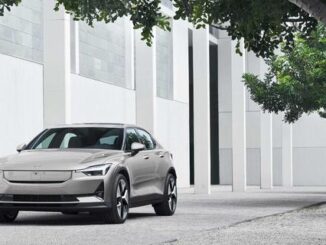Of course conventionally powered cars also consume more fuel than usual while operating in extreme temperatures, but these losses are more profound with EVs, which are at the mercy of what are often inoperative public charging stations. While this will vary from one model to another, and according to a variety of external factors, it underscores the fact that EV owners need to anticipate attaining fewer miles on a charge during extreme temperatures, and adjust both their driving styles and expectations accordingly. It’s also wise to keep a watchful eye on an EV’s state-of-charge indicator and be aware of where public charging stations are located in case one is needed.
There are, however, several proactive ways to wring maximum miles out of an electric vehicle of any kind, no matter how sweltering daytime temperatures become.
For starters, experts suggest parking an EV in a garage or covered parking lot—or at the least in a shaded area—to help minimize exposure to the scorching sun. It’s a good idea to pre-cool the vehicle remotely while it’s charging (using an app or timer function on a home charger, if available) to tap the power grid instead of the battery to bring down internal temperatures. That will likely save several miles of driving range by not immediately over-taxing the vehicle’s air conditioning while pulling out of one’s driveway.
For better or worse it’s also helpful to run the air conditioning sparingly while driving, especially at highway speeds where battery consumption is automatically greater than it is during around-town use. This is where having ventilated seats can come in handy, as they cool one from the bottom up while using far fewer kilowatts than running an A/C compressor. An even better strategy is to avoid driving and/or charging an EV during the hottest times of the day if that’s an option.
Also, owners will want to engage an EV’s maximum regenerative braking setting to send the most amount of energy back to the battery that would otherwise be lost while slowing down and coming to a stop. Many models allow so-called “one pedal” driving in which the function is dialed up enough to enable the vehicle to reach a complete stop, at or at least close to it, without using the brakes. One-pedal driving also has the added bonus of minimizing brake system wear.
Experts suggest EV owners maintain no more than an 80% charge to help prevent an accelerated loss in capacity down the road. That’s because maxing out to a full charge places added stress on the battery. Engage an EV’s “eco” or “battery saver” mode if it’s so equipped to conserve energy. Rely as much as possible on home charging and avoid using public Level 3 DC Fast Charge stations unless absolutely necessary, as they can accelerate battery degradation, especially in hot climates.
Otherwise, many of the same strategies for saving fuel in a gas-engine vehicle apply to maximizing an EV’s operating range. The most effective advice is to simply go easy on the accelerator. It may be tempting to exploit an electric car’s instant and continuous torque to achieve grin-inducing full-throttle launches, but that consumes far more battery power than driving passively. Use the cruise control on the highway to maintain a constant speed.
Be sure to keep an EV’s tires properly inflated to minimize rolling resistance, and in turn, its energy efficiency. Use a good-quality tire gauge to check the air pressure—more frequently as the weather warms up or cools down as it can vary by an average of one PSI (pounds per square inch) with every 10-degree change in ambient temperature. Keep the tires inflated to the recommended PSI level as indicated by a label inside the driver’s-side door.
It’s also a smart move to clear any clutter from the cabin or trunk, as reducing a vehicle’s curb weight is a surefire way to improve its energy efficiency. Also, minimize wind resistance at higher speeds by keeping the windows closed and relying on the climate control vents to circulate air throughout the cabin, again minimizing use of the A/C. Remove an EV’s roof rack or other air-blocking accessories when not in use to preserve its inherent aerodynamics.
No matter how hot the temperatures may climb, let’s hope cooler heads prevail.
Source: Forbes.com
ENB Top News
ENB
Energy Dashboard
ENB Podcast
ENB Substack




